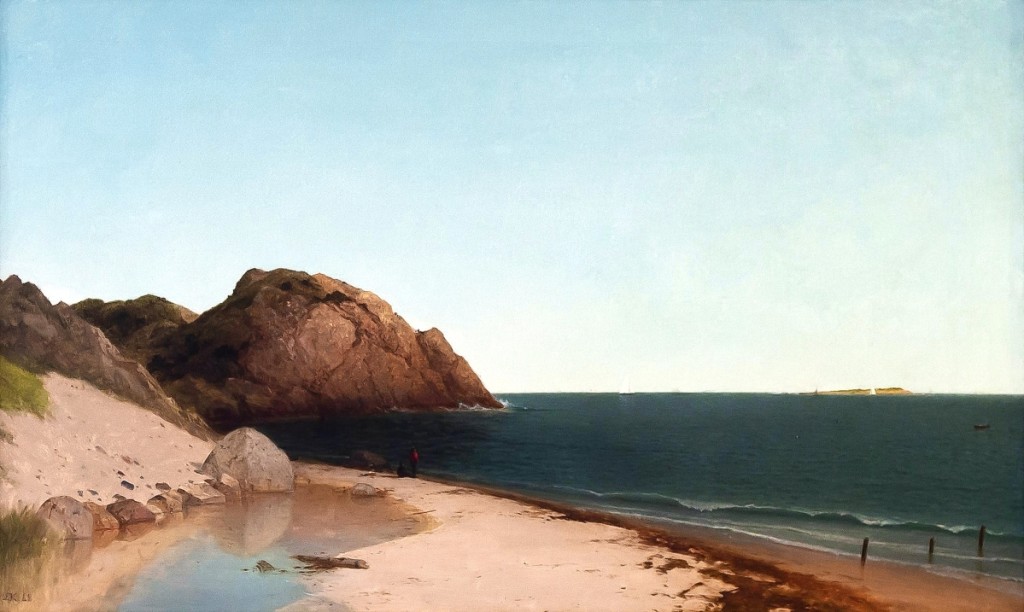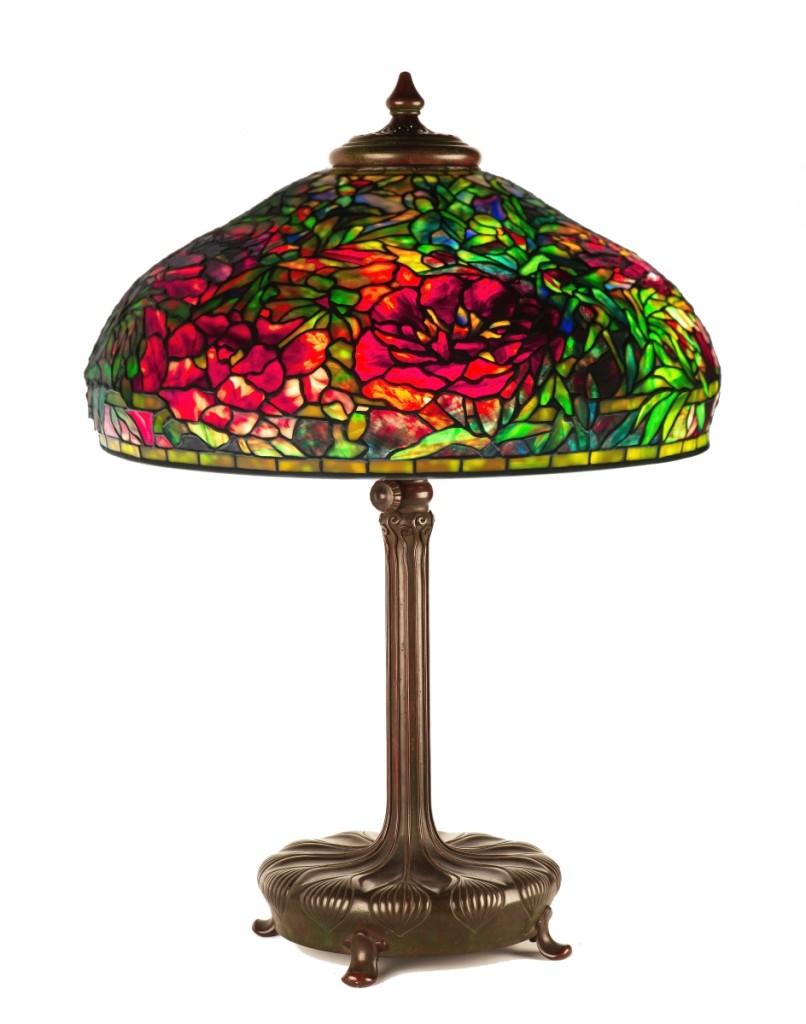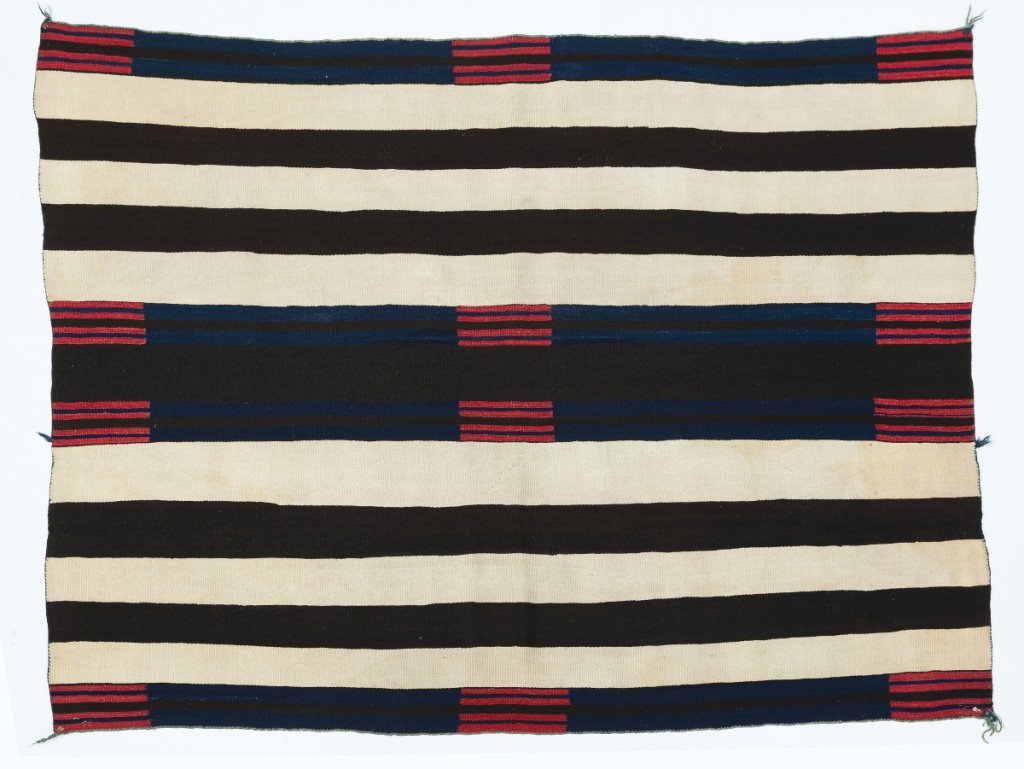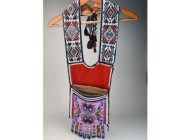
This oil on canvas painting by American luminist John F. Kensett (1816-1872), “Singing Beach & Eagle Rock, Magnolia, Massachusetts,” tripled its high estimate to lead the sale at $1,080,000, among the highest prices achieved by the artist and “a record for an item we’ve sold,” said Matt Cottone. The 22-by-36-inch oil on canvas was signed and dated “J.F. K. ‘68” lower left, came from the collection of Mr and Mrs Roy W. Doolittle Jr, Buffalo, N.Y., and sold to a private collector on the phone.
Review by W.A. Demers, Photos Courtesy Cottone Auctions
GENESEO, N.Y. – Cottone Auctions set a sale record on September 18, grossing $3.8 million on 170 lots. Matt Cottone said that only three lots were passed, and a total of about 2,500 online bidders accompanied by those who kept a full bank of phone lines – up to ten on some items – busy through the day, and these spurred the sale to its pinnacle.
Accounting for $1,080,000 of the sale’s total was John F. Kensett’s (American, 1816-1872) oil on canvas painting, “Singing Beach & Eagle Rock, Magnolia, Massachusetts,” which tripled its high estimate to lead the auction. Cottone said that the price was among the highest by the artist and “a record for an item we’ve sold.” The 22-by-36-inch oil on canvas was signed and dated “J.F. K. ’68” lower left and came from the collection of Mr and Mrs Roy W. Doolittle Jr, Buffalo, N.Y., by bequest.
Catalog notes included quotes regarding the painting, including a letter by John K. Howat, assistant curator of American paintings and sculpture at the Metropolitan Museum of Art to Mrs Adrian W. Smith, a previous owner, on May 25, 1965, stating “The Kensett strikes me as being a very fine one. The arrangement and colors are very clear and forceful – a good sign in Kensett’s work. The silence of these spare Kensetts is very impressive.”
More recently, Susan Crane, associate curator, Albright Knox Art Gallery, in a 1983 letter to the Doolittles, said, “Your Kensett was an important element in the success of the show – it really made the room glow. Several art historians, in fact, commented on its excellence. It really does rank with the most magnificent of his works, and we are grateful to have been able to show it in the context of his ‘peers.'” Cottone said the painting was won by a private collector bidding on the phone. “There was a lot of action on this, much more than the two or so bidders that you normally see, and it was that way even north of $750,000.”
Among the Hudson River School artists, Kensett is the acknowledged master of the mode termed “luminism” in American landscape painting, the late Nineteenth Century painting style emphasizing a unique clarity of light.

This rare Tiffany Studios New York “Elaborate” Peony table lamp captured the highest price among the many examples offered in the sale, finishing at $390,000.
Light of another kind filled the ranks of the sale’s top selling lots – a parade of rare mostly Tiffany Studios table and floor lamps, which captured ten of the top 16 rungs and accounted for about $2 million of the sale’s total. The highest selling example was an “Elaborate” Peony table lamp, which was bid to $390,000. Circa 1915 with leaded glass and patinated bronze and a shade impressed Tiffany Studios New York 1903 on a period bronze Tiffany Studios decorated telescopic library base with brownish green patina, the lamp’s dimensions were 32 inches in height with a 22-inch diameter shade. What differentiates an “elaborate” peony from a garden-variety peony? “The ‘elaborate’ has a larger shade and in the neighborhood of 1,000 pieces of glass,” said Cottone. “It was one of their most expensive lamps.”
He said the Tiffany lighting came from examples that he had collected from “literally all over the country. Some came from right here in Rochester, all the way to the West Coast, some of these had been in the same families since the 1940s. We build it piece by piece.”
Tiffany Dragonfly lamps are among the most desirable of the “blue-chip” Tiffany lamps, and one such example proved the point by commanding $153,600 against a $60/80,000 estimate. Catalog notes described the circa 1910 lamp as having “beautiful blue bodied dragonflies with red eyes and blueish red wire mesh wings. The background is a wonderful ripple glass of reds, yellows and greens, also decorated with orange, red and blue upper and lower geometric borders with green and amber glass jewels.” It came out of the private collection of Sheldon Barr and Tom Gardner of New York City.
Fetching $136,800, also a premium above its $50/80,000 expectation, was a Tiffany Studios New York Bamboo table lamp, circa 1910. From a West Coast collection, the lamp’s shade had exceptional modelling and a slight hint of subtle blue to the background, strong translucent green leaves with bold dark orangish brown stalks.
The rare Lily Pad table lamp, circa 1905, followed at $127,200. This is a case where the base competes with shade in catching the eye and the rare greenish brown patinaed Twisted Vine base supported a shade design of horizontal rows of floating lily pad leaves, oval leaves smallest near aperture and increasing in size towards the base.
The Tiffany procession was interrupted by a rare Duffner & Kimberly Poppy floor lamp, circa 1910. Realizing $98,400, it featured bronze and leaded glass with large, deep red, lavender and purple poppy blossoms in various stages of bloom, with green leaves and stems. Standing on a bronze Renaissance floor base, it was described in catalog notes as “one of the finest and most highly sought-after lamps produced by Duffner & Kimberly.”

This Navajo Second Phase chief’s blanket, purported to have been that of Red Cloud’s (1822-1909), a Sioux chief, before entering the collection of paleontologist Othniel Marsh, topped out at $162,000.
And the parade of Tiffany table lamps continued: a Peony, circa 1910, blossomed to $93,000; two Nasturtiums, one circa 1910 and the other circa 1905, opened up to $79,200 and $67,200, respectively; a Tulip, circa 1910 on a reddish brown patina Tiffany Studios organic root base tiptoed to $45,600, while a circa 1905 Clematis on a Tiffany Studios Petal base climbed to $45,600.
Not lighting, but an additional highlight possibly by Tiffany Studios, comprised three early Twentieth Century cased Grape Vine windows, circa 1915, with grape vines and foliage with fruit, mottled, striated and confetti glass. Two of them measured 33½ by 18 inches and one was 29½ by 18½ inches. The trio left the gallery at $48,000.
Tiffany lighting dominated the sale’s highest echelons but it was by no means the sole performer. In the clocks category, a rare E. Howard & Co. No. 49 astronomical hanging regulator pulled down $174,000, besting its $80,000 high estimate. The circa 1874 clock, 8 feet 5 inches high, was in an elaborately carved walnut and burl oversized case and had the original 14-inch painted metal dial signed “E. Howard & Co., Boston.” The brass eight-day weight-driven time-only movement was also signed “E. Howard & Co., Boston.” Provenance for the clock listed the private collection of the Calculagraph Co., East Hanover, N.J., and three generations of owners. The auction house’s website included a link where bidders could see a video of the clock running.
Outperforming its $40/60,000 estimate, a Navajo Second Phase chief’s blanket commanded $162,000. The 44-by-59-inch textile dated to circa 1860-1870, the late classic period. Handspun in white, brown, indigo blue and red yarn, it was purportedly owned by Red Cloud (1822-1909), a Sioux chief, before passing to the Marsh and Atwater families. The catalog entry for the blanket notes a photograph commemorating the meeting between the paleontologist Othniel Marsh and the Lakota chief Red Cloud in New Haven in 1883, stating, “While digging for fossils in Dakota Territory nine years earlier, Marsh observed and later reported to government officials and newspapers in the East the deplorable conditions and widespread corruption on several Native American reservations. Marsh had met Red Cloud on this trip and later invited him to visit his Connecticut home. The first professor of vertebrate paleontology in the United States, Marsh was a frequent member of western expeditions sponsored by the US Geological Survey.”
A piece of conceptual art was also notable. An oil on canvas, 1976-77, by Ted Stamm (1944-1984), one of the most multi-faceted conceptual artists working in SoHo in downtown Manhattan in the 1970s and early 1980s, brought $55,200. Titled “DGR-32 (Dodger),” the abstract shape of a baseball field rendered in black was signed and titled on reverse and measured 44¾ by 108 inches. Stamm received awards in painting from the John Simon Guggenheim Memorial Foundation (1983) and the National Endowments for the Arts (1981-1982), and his work is in a number of public collections.
Cottone’s next auction is set for November 5-6. Prices given include the buyer’s premium as stated by the auction house. For information, 585-243-1000 or www.cottoneauctions.com.



















